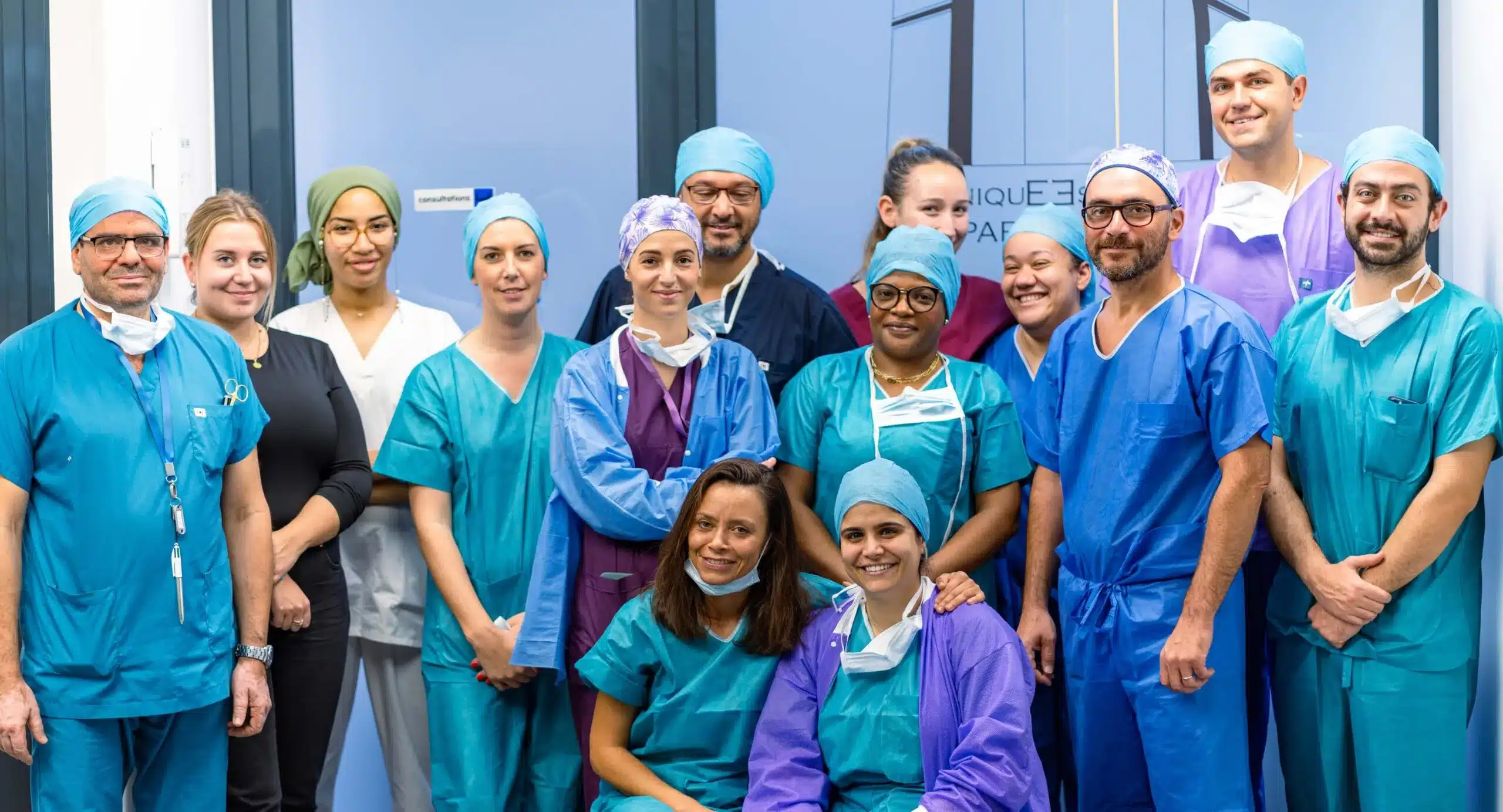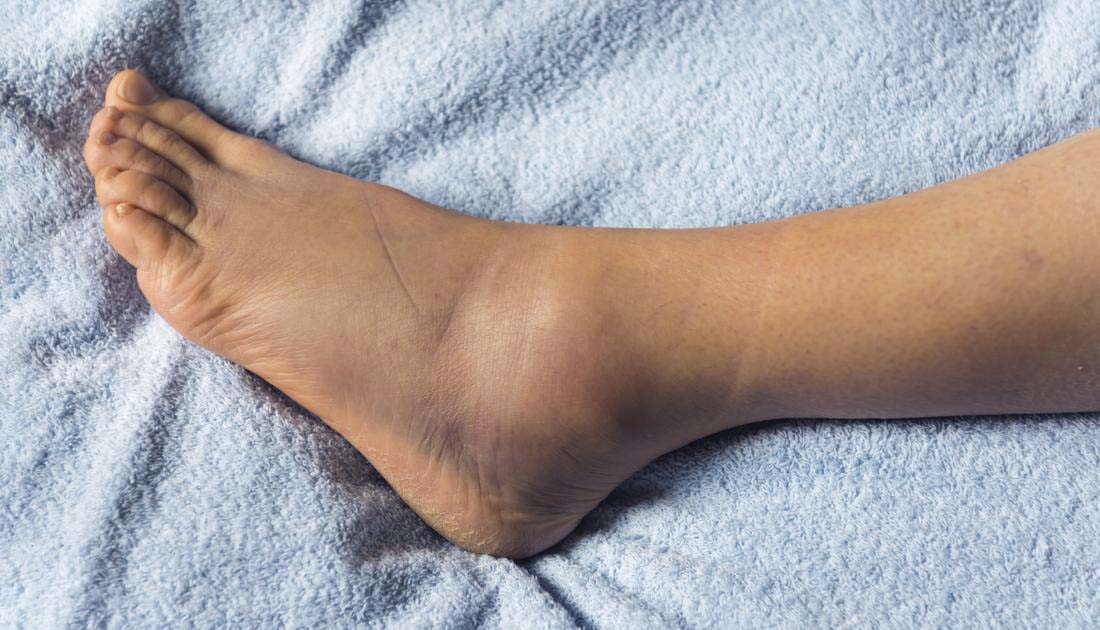Patients affected by lipedema and operated on by Dr. Nicolas Zwillinger often experience post-operative edema in their lower limbs. These swellings may take time to resolve and can sometimes cause stress for these women. In this article, we will discuss this aspect of the recovery process.
Definition of post-operative edema
Edema is a protective response of the body against external aggression. In the case of WAL liposuction, the aggression is due to the back-and-forth movements performed by the surgeon using the Body-jet aspiration cannula throughout the procedure.
These edemas manifest as swellings in the interstitial tissues, caused by an accumulation of fluid (mostly water).
These swellings are present in the operated areas (lower or upper limbs), with generally more significant edema observed in the “ankle” and “calf” regions.
The volume of fat aspirated during the surgical treatment of lipedema is temporarily replaced by edema. In some cases, the operated areas may appear larger than before the procedure, but there is no cause for concern.
Duration of post-operative edema
The body inevitably presents post-operative edema, but it will gradually diminish and eventually disappear. We estimate that the peak of swelling occurs between Day +3 and Day +10 after the procedure.
The duration of post-operative edema resolution varies greatly among patients.
It can take a minimum of 6 weeks, on average 3 to 6 months, and in some cases, up to a year.
Sometimes, we observe an asymmetrical distribution of swelling in one limb compared to the other. There is no need for concern; in some patients, we notice a slowdown of the lymphatic system in the left or right limb, explaining this asymmetry.
This is one of the reasons why Dr. Nicolas Zwillinger recommends lymphoscintigraphy of the lower or upper limbs before the procedure in certain patients. This examination, performed in nuclear medicine centers, helps to identify a normal lymphatic system, unilateral or bilateral lymphatic slowdown, or in some cases, lymphedema. Regardless of the result of this examination, it does not affect the procedure, but it can provide us with information about the post-operative period and the possibility of asymmetrical swelling or longer resolution times in certain patients.
How to facilitate faster drainage of edema
1. Post-operative compression
Compression garments are applied immediately after the surgery, right in the operating room, to help limit the development of edema. This compression should be worn during the first few weeks/first months after the procedure, and then gradually reduced based on the rate of swelling reduction.
Here is the post-operative compression protocol recommended by Dr. Zwillinger and his team :
Day 0 to Day +10 : Double compression (class 3 stockings or tights + BIFLEX compression bandages or LIPOELASTIC panty), both day AND night.
Day +10 to Day +15 (minimum, ideally Day +30) : Single class 3 compression, both day AND night.
Day +15 or Day +30 to Day +60 : Single class 3 compression, either during the day OR night.
Day +60 to Day +90 : Single class 2 compression, either during the day OR night.
To ensure proper compression from the day of the surgery, you need to take measurements and order your compression garments before the operation. We also recommend ordering new stockings 2 to 3 weeks after the surgery using your updated measurements. Always ensure you are properly supported and maintained in your compression garments.

2. Manual lymph drainage
Manual lymphatic drainage is also highly recommended post-operatively, as it helps activate the elimination of post-operative edema starting from 7 to 10 days after the surgery. Drainage sessions can be performed by physiotherapists, aestheticians, and other trained professionals.
It is advised to have two drainage sessions per week for a minimum of 5 weeks. In some cases, these drainage sessions may continue for several months. The following drainage techniques may be used :
- Leduc
- Vodder
- Renata
Finding professionals who practice these techniques can sometimes be challenging. In such cases, we recommend considering pressotherapy sessions.

3. Cold therapy
Applying cold to the areas with swelling can alleviate pain and help reduce post-operative edema. You can repeat this application several times a day over several weeks.

4. Physical activity
Starting from the day of the operation, walking will be possible and, in fact, strongly recommended to facilitate effective drainage of post-operative edema. Even though walking time is initially limited in the first few days, it is advisable to walk regularly. As you progress in your recovery, walking time and distances covered will increase, and swelling will gradually decrease. However, avoid pushing yourself too hard in the first two weeks and always listen to your body.
In the next phase (3 to 4 weeks after the operation), water-based sports will become feasible. Movements in the water promote drainage of post-operative edema. We recommend swimming, aqua cycling, aqua jogging, or aqua aerobics, always starting gently.

5. Time
The most crucial factor in the resolution of post-operative edema is time. Even if you follow all our advice to the letter, the reduction of post-operative edema varies greatly from one patient to another. We encourage you to be patient and allow your body time to recover from the WAL liposuction surgery in the case of treating your lipedema.



